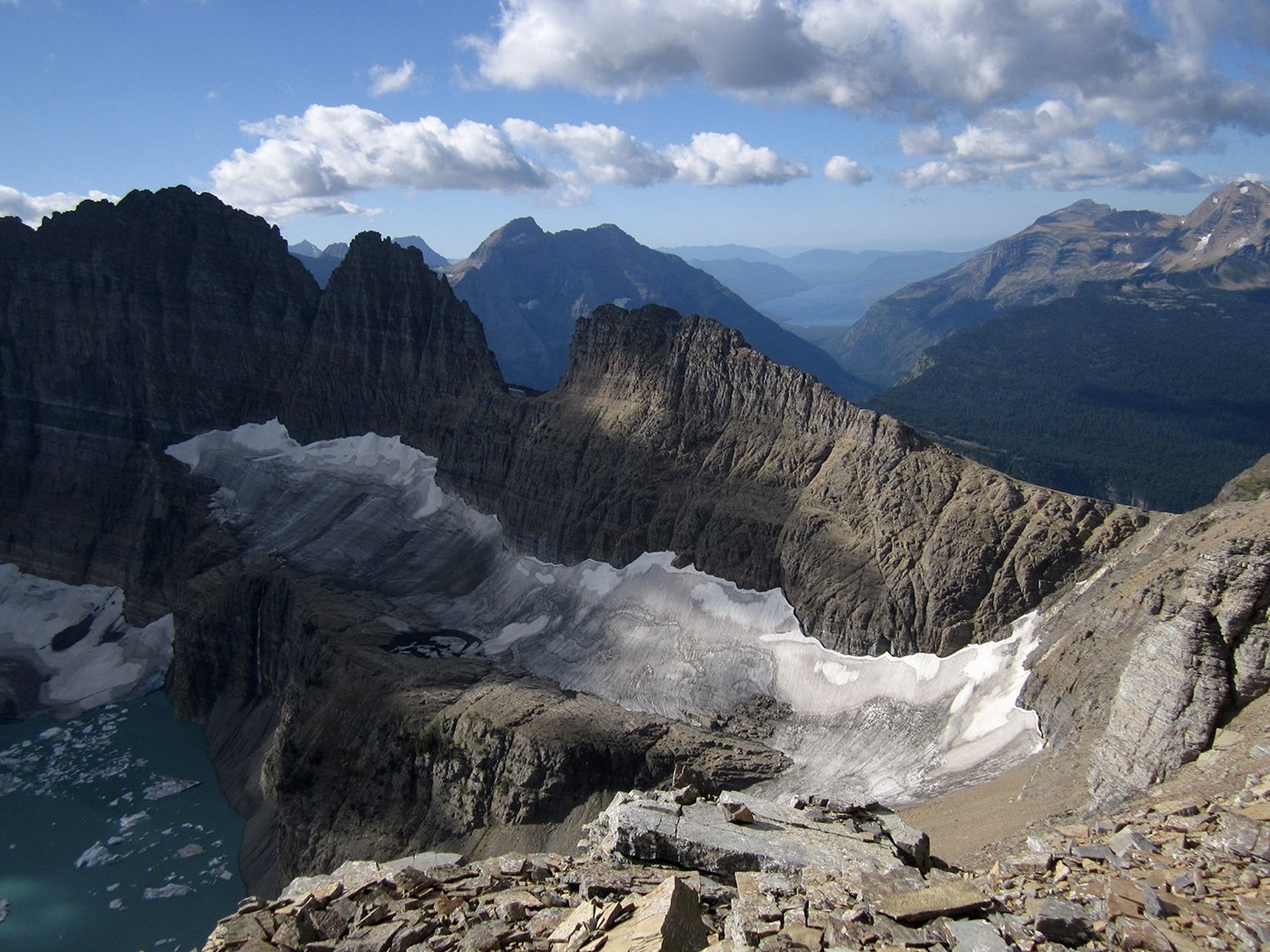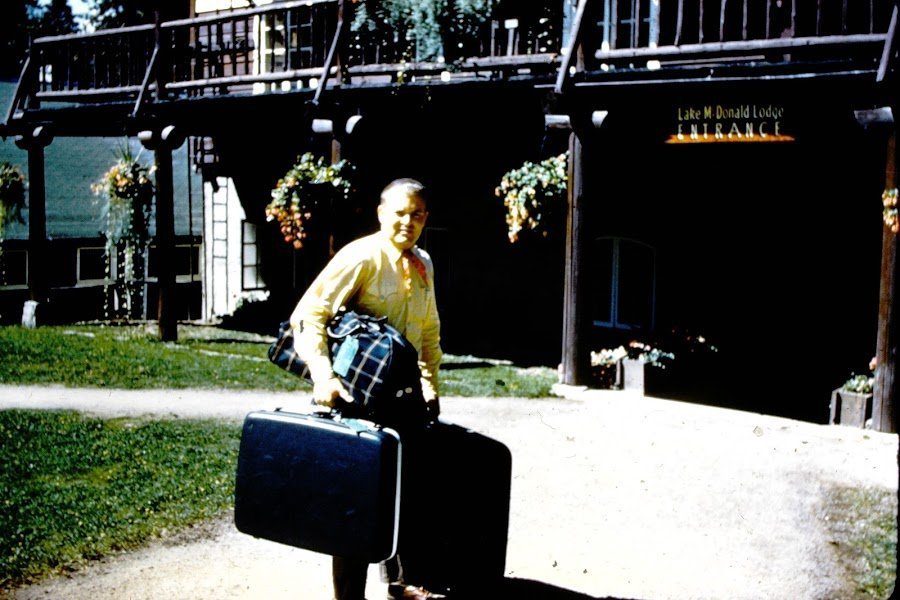The Continental Divide Trail (CDT) in Glacier National Park, Montana, is a 110-mile stretch of breathtaking wilderness that traverses some of the most stunning alpine scenery in North America. This segment of the CDT winds through the park’s northern and southern boundaries, offering hikers unparalleled views of glacial lakes, towering peaks, and diverse wildlife. From the rugged terrain of Goat Haunt to the expansive vistas at Marias Pass, the trail challenges and rewards adventurers with its natural beauty and ecological significance.
What is the Route of the Continental Divide Trail in Glacier National Park?

The Continental Divide Trail in Glacier National Park spans 110 miles, stretching from the northern end at Goat Haunt to the southern terminus at Marias Pass. This spectacular route takes hikers through some of the park’s most iconic valleys and mountain passes, including:
- Many Glacier Valley
- St. Mary Valley
- Two Medicine Valley
- Garden Wall
- Redgap Pass
- Piegan Pass
- Triple Divide Pass
- Pitamakan Pass
- Dawson Pass
Each of these locations offers unique landscapes and challenges, contributing to the diverse experience of hiking the CDT through Glacier National Park.
What are the Notable Landmarks Along the Trail?

The Continental Divide Trail in Glacier National Park is dotted with remarkable landmarks that showcase the park’s geological and ecological wonders. Some of the most notable include:
-
Triple Divide Peak: A rare hydrological feature where water flows to three different oceans – the Atlantic, Pacific, and Arctic (via Hudson Bay). This peak can be viewed from the Going-to-the-Sun Road in the Two Dog Flats area.
-
Garden Wall: An impressive alpine wall that provides spectacular panoramic views of the surrounding landscape.
-
Glacial Lakes: The trail passes by numerous pristine mountain lakes, each offering a unique perspective of the park’s rugged beauty.
-
Waterfalls: Hikers will encounter various cascading waterfalls throughout their journey, adding to the trail’s scenic appeal.
-
Snow-capped Summits: The trail provides excellent vantage points to observe the park’s iconic snow-capped peaks, especially from high mountain passes.
How Difficult is the Continental Divide Trail in Glacier National Park?
The Continental Divide Trail through Glacier National Park is considered challenging due to several factors:
- High Elevation: Much of the trail is at high altitudes, which can affect hikers’ stamina and increase the risk of altitude sickness.
- Rugged Terrain: The trail features steep climbs, rocky paths, and potentially treacherous descents.
- Weather Conditions: Hikers may encounter snow and ice, even during summer months, particularly at higher elevations.
- Wildlife Presence: The presence of bears and other large mammals requires constant vigilance and proper safety precautions.
- Remote Sections: Some parts of the trail are quite remote, requiring self-sufficiency and good navigation skills.
Hikers should be well-prepared, physically fit, and equipped with appropriate gear to tackle this challenging section of the CDT.
What Permits are Required for Hiking the Continental Divide Trail in Glacier National Park?
To hike and camp along the Continental Divide Trail in Glacier National Park, you’ll need to obtain the following permits:
- Backcountry Permit: Required for overnight camping within the park’s backcountry areas.
- Entrance Pass: Necessary for entering Glacier National Park.
Permit Details:
- Reservation Process: Backcountry permits can be reserved in advance through the National Park Service website or by contacting the park’s backcountry office.
- Fees: There is a fee for backcountry permits, but the exact amount may vary. Check the National Park Service’s Backcountry Camping page for current information.
- Seasonal Considerations: Permits are required year-round, but availability and regulations can change seasonally. During peak season (typically summer), permits are in high demand and should be reserved well in advance.
Where are the Primary Trailheads for the Continental Divide Trail in Glacier National Park?
The Continental Divide Trail in Glacier National Park has several key trailheads that serve as entry and exit points. Here are the primary ones:
- Goat Haunt Trailhead
- Location: Northern end of the park
- GPS Coordinates: 48.9717° N, 113.7833° W
- Access: By boat from Waterton Lakes or hiking from other trailheads
-
Parking: Limited
-
Marias Pass Trailhead
- Location: Southern end of the park
- GPS Coordinates: 48.3167° N, 113.3500° W
- Access: Easily accessible by car
-
Parking: Ample
-
Many Glacier Trailhead
- Location: Central area of the park
- GPS Coordinates: 48.7933° N, 113.6567° W
- Access: By car or park transportation
- Parking: Ample
Each trailhead offers unique advantages and access to different sections of the Continental Divide Trail within the park.
What Wildlife Can Be Encountered Along the Continental Divide Trail in Glacier National Park?
Glacier National Park is home to a diverse array of wildlife, many of which can be encountered along the Continental Divide Trail. Here’s a list of common species and some safety tips:
Common Wildlife Species:
- Mountain Goats
- Bighorn Sheep
- Moose
- Black Bears
- Grizzly Bears
- Elk
- Mule Deer
- White-tailed Deer
- Mountain Lions (rarely seen)
Best Times for Wildlife Viewing:
- Early morning and late evening are optimal for wildlife sightings, as animals are most active during these cooler periods.
Safety Precautions:
- Bear Safety:
- Carry bear spray and know how to use it
- Make noise while hiking to avoid surprising bears
- Store food properly and maintain a clean campsite
-
Travel in groups when possible
-
General Wildlife Safety:
- Maintain a safe distance from all wildlife
- Never feed wild animals
-
Be aware of your surroundings, especially in areas with limited visibility
-
Seasonal Awareness:
- Be extra cautious during mating seasons and when animals have young
- Know which animals are more active during different times of the year
By following these precautions and respecting wildlife, hikers can safely enjoy the diverse fauna along the Continental Divide Trail in Glacier National Park.
What are the Best Seasons to Hike the Continental Divide Trail in Glacier National Park?
The optimal time to hike the Continental Divide Trail in Glacier National Park varies depending on your preferences and experience level. Here’s a breakdown of what to expect in each season:
Summer (July to September):
- Pros:
- Most trails are snow-free
- Longer daylight hours
- Warmer temperatures
- Peak wildflower season
- Cons:
- Crowded trails and campsites
- Higher chance of encountering bears
- Potential for wildfires and smoke
Fall (Late September to October):
- Pros:
- Beautiful fall colors
- Fewer crowds
- Cooler temperatures ideal for hiking
- Cons:
- Shorter days
- Increased chance of snow at higher elevations
- Some facilities may begin to close
Spring (May to June):
- Pros:
- Fewer crowds
- Waterfalls at peak flow
- Chance to see newborn wildlife
- Cons:
- Many trails still snow-covered
- Higher water levels can make stream crossings dangerous
- Unpredictable weather
Winter (November to April):
- Pros:
- Solitude and pristine winter landscapes
- Opportunity for winter sports like cross-country skiing
- Cons:
- Extreme cold and harsh weather conditions
- Most park facilities closed
- Advanced winter survival skills required
For most hikers, late summer to early fall offers the best balance of favorable weather conditions and accessibility. However, each season presents unique opportunities and challenges for experiencing the Continental Divide Trail in Glacier National Park.
How Should Hikers Prepare for the Continental Divide Trail in Glacier National Park?
Proper preparation is crucial for a safe and enjoyable experience on the Continental Divide Trail in Glacier National Park. Here’s a comprehensive guide to help hikers prepare:
Physical Preparation:
- Conditioning: Build endurance through regular hiking, cardio exercises, and strength training.
- Practice Hikes: Conduct several practice hikes with a loaded backpack to simulate trail conditions.
- Altitude Acclimation: If coming from lower elevations, allow time to acclimate to the higher altitudes in Glacier National Park.
Gear and Equipment:
- Essential Gear:
- High-quality backpack
- Sturdy, broken-in hiking boots
- Weather-appropriate clothing (layers)
- Sleeping bag rated for low temperatures
- Tent or shelter
- Water filtration system
- First aid kit
- Navigation tools (map, compass, GPS)
-
Bear spray
-
Food and Water:
- Plan meals carefully, focusing on high-energy, lightweight options
- Bring extra food in case of emergencies
- Carry sufficient water and know water sources along the trail
Planning and Navigation:
- Route Planning: Study maps and trail descriptions thoroughly before your trip.
- Itinerary: Create a detailed itinerary and share it with someone not on the trip.
- Permits: Obtain necessary backcountry permits well in advance.
- Weather Check: Monitor weather forecasts and be prepared for rapid changes.
Safety Precautions:
- Wildlife Safety: Learn proper food storage techniques and how to handle wildlife encounters.
- Emergency Preparedness: Carry a communication device like a satellite phone or personal locator beacon.
- First Aid Knowledge: Take a wilderness first aid course before your trip.
Environmental Responsibility:
- Leave No Trace: Familiarize yourself with and practice Leave No Trace principles.
- Fire Regulations: Understand and follow the park’s fire regulations.
By thoroughly preparing in these areas, hikers can maximize their enjoyment of the Continental Divide Trail in Glacier National Park while minimizing risks and environmental impact.